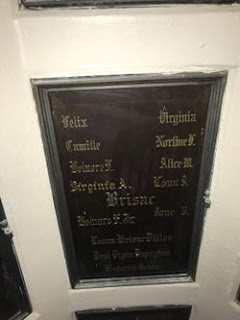1910-1995
Well known comedic character actress Mary Wickes was born Mary Isabella Wickenhauser in St. Louis, MO on this date into a well off family--her father a prominent banker in the city. Her parents, ardent theater attendees, took her to plays being at a very early age. This however did not encourage her to participate in acting until she graduated from college with double degrees at the age of 20 (neither degree was in theater). She had planned to attend law school, but a professor, apparently seeing something of a comic in her, encouraged her to check out acting (drama) instead. She took it hardly! She soon made her stage debut and began acting on the summer circuit. She was encouraged to go further; so she moved herself to New York and was fortunate enough to gain a role in as a walk on in a major play starring Henry Fonda. So, she made her Broadway premiere in 1934 in The Farmer Takes A Wife. She made her film debut that same year in a little known comedy short by Ralph Staub: Art Trouble. She appeared in another little comedic short the following year, Watch the Birdie, made by former Hal Roach protege Lloyd French. But...both of these films clearly do NOT fall into the silent era of 1929 or before, so why is Wickes profiled here? It is because her first appearance in a full length film came in Orson Welles' infamous 1938 late silent Too Much Johnson. Aside from Welles himself, and Joseph Cotten, she is really the only cast member to go on to be a regular actor; to make a success of the profession. She, of course, would go on to become one of the most recognizable straight comedic wisecrackers of the 20th century, both in film and in television. Though she appeared in several well known films (Now, Voyager, Who Done It, June Bride), it was for her television appearances that she is most remembered and recognized. She made her small screen debut early, in 1948 in two episodes of Actor's Studio. Her list of show appearances is long and impressive (Alfred Hitchcock Presents, The Thin Man series, My Three Sons, I Spy, Columbo, Kolchak, The Waltons, Murder She Wrote, Punky Brewster, Father Dowling Mysteries, & three of Lucille Ball's series--and that barely scratches the surface). She also appeared in several well known comedy films later in life including both of Whoopie Goldberg's Sister Act films and Postcards From The Edge written by Carrie Fisher. Wickes worked right up until her death on the 22nd of October of 1995, passing away from complications due to breast cancer. Her last acting job was in voice-over work, occupying the role of "Grandma" in the animated series Life with Louie. She is in interred with family at Shiloh Valley Cemetery in Shiloh, Illinois.
















